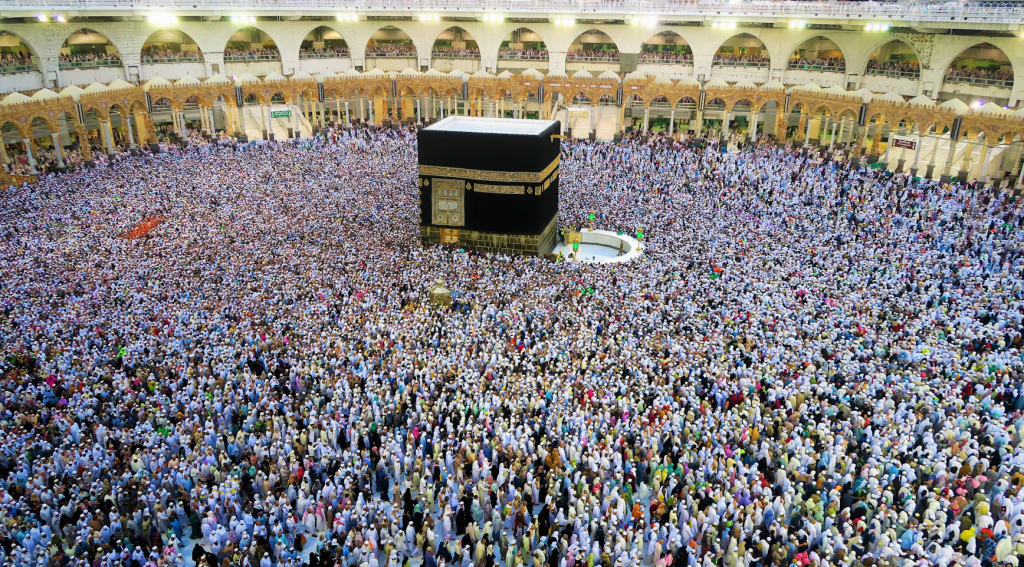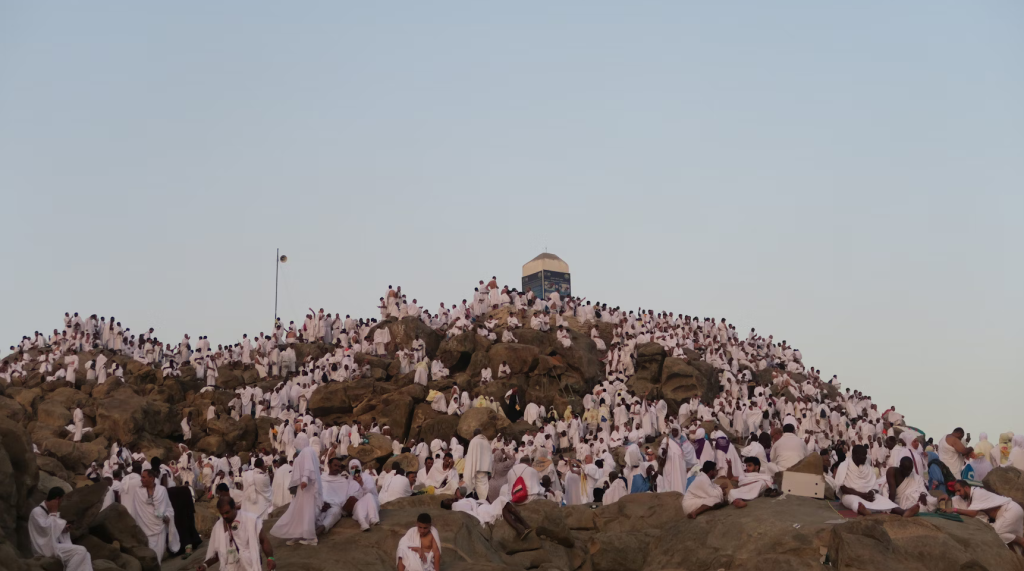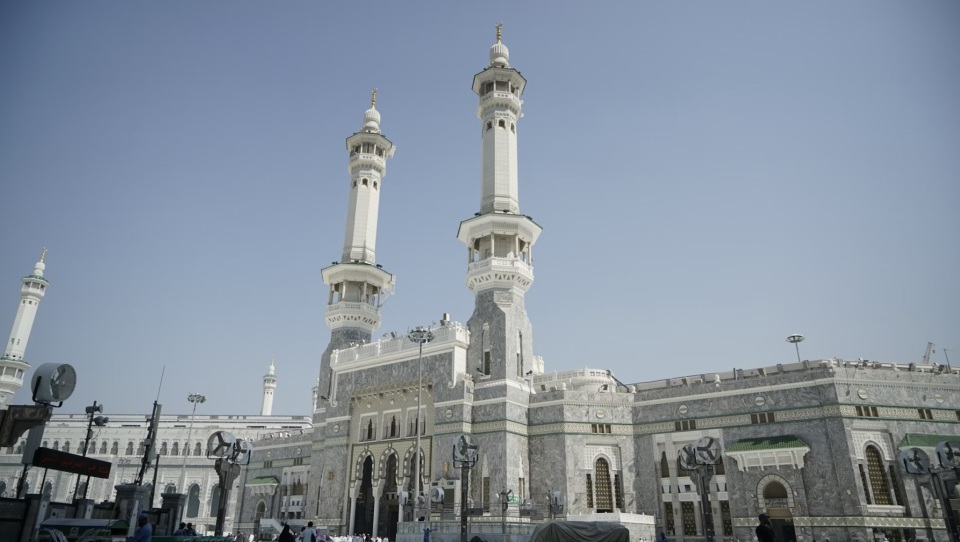Performing Hajj, one of the five pillars of Islam, is a deeply spiritual journey and a once-in-a-lifetime obligation for every able-bodied and financially capable Muslim. This guide covers everything you need to know about Hajj from the religious significance to practical travel logistics, fees, and insider tips to ensure a seamless experience.

What is Hajj?
Hajj is the annual Islamic pilgrimage to Mecca in the Kingdom of Saudi Arabia. It is an obligatory act of worship for all adult Muslims who are physically, mentally, and financially able to undertake the journey, at least once in their lifetime.
Why is it important?
Hajj commemorates the actions of the Prophet Ibrahim (Abraham), his wife Hajar, and their son Ismail. It symbolises submission to Allah, unity among Muslims, and spiritual cleansing. Upon completion, pilgrims are referred to as Hajji (for men) or Hajjah (for women), and many experience profound personal transformation.
When is Hajj held?
Hajj occurs annually during the Islamic month of Dhul Hijjah, specifically from the 8th to the 13th day. These dates shift each year due to the Islamic lunar calendar, which is about 10–11 days shorter than the Gregorian calendar.
How long is Hajj?
The core rituals take five to six days, although many pilgrims arrive earlier to perform Umrah or stay longer for spiritual reflection.
How many pilgrims can perform Hajj each year?
Saudi Arabia sets a Hajj quota for each country based on its Muslim population, usually 1,000 pilgrims per million residents. In recent years, the maximum capacity has reached around 2–2.5 million pilgrims. However, the number may vary due to global events, pandemics, or infrastructural updates.
Which country has the highest Hajj quota?
Indonesia receives the highest Hajj quota – over 200,000 pilgrims annually. This is due to its status as the world’s most populous Muslim-majority country, combined with strong diplomatic relations with Saudi Arabia and an efficient national registration system.
Fees for Hajj
Typical costs
Hajj packages vary widely depending on origin, length of stat, accommodation options, and services required:
- Standard economy packages: USD 5,000 – USD 7,000
- Premium packages: USD 10,000 – USD 20,000
Packages are usually all-inclusive of accommodation, meals, transport, guide services, and visa processing.
Can one perform Hajj in debt?
No. Islam requires that Hajj only be performed if one is debt-free and financially able to cover the pilgrimage without neglecting family responsibilities.

Getting to Mecca
Mecca (Makkah) is accessible only to Muslims. The main entry points are:
- King Abdulaziz International Airport (Jeddah): the closest international hub.
- Prince Mohammed bin Abdulaziz Airport (Medina): for those wishing to visit the Prophet’s Mosque before Hajj.
- Land entry: available for pilgrims from neighbouring countries (e.g., Jordan, UAE).
From these hubs, pilgrims travel by buses or trains (especially the Haramain high-speed rail) to Mecca.
What is the special permit for Hajj?
A Hajj Permit (Tasreeh) is mandatory and issued through the Saudi Ministry of Hajj and Umrah. This ensures legal entry into Mecca for the pilgrimage. It is separate from the regular tourist or Umrah visa.
Staying longer?
While the permit and visa are generally tied to your travel package, staying longer pre- or post-Hajj is allowed under certain visa types. However, this must be arranged through your Hajj operator and approved by Saudi authorities. Tourist or Umrah visas do not permit Hajj.
Steps to perform Hajj – the ritual journey
Here’s a simplified breakdown of the main rites of Hajj:
- Ihram: Entering a sacred state; pilgrims wear special garments and make the intention (niyyah) for Hajj.
- Tawaf: Circling the Kaaba seven times in a counter-clockwise direction.
- Sa’i: Walking between the hills of Safa and Marwah, commemorating Hajar’s search for water.
- Arafat: Standing in prayer and reflection on the plains of Arafat – the pinnacle of Hajj.
- Muzdalifah: Collecting pebbles and sleeping under the stars.
- Ramy al-Jamarat: Stoning the three pillars symbolising the rejection of evil.
- Qurbani: Animal sacrifice (often done on your behalf).
- Tawaf al-Ifadah: Another circuit of the Kaaba.
- Shaving/Cutting hair: Symbolising renewal and humility.
- Tawaf al-Wada: Farewell circumambulation before departing Mecca.
What do pilgrims wear during Hajj?
Ihram attire
- Men: Two unstitched white cloths – one around the waist and one over the shoulder.
- Women: Simple, modest clothing that covers the body (typically white or light-coloured, no face veil).
The purpose of the attire is equality, humility, and purity by removing distinctions of wealth, race, or status.

Accommodation during Hajj, from affordable to luxury
During Hajj, pilgrims will stay in and around Mecca, Mina (tent city), as well as Arafatand Muzdalifah, where many accommodation options are available:
- Affordable: Dormitory-style tents in Mina, shared hotel rooms, government-subsidised packages.
- Luxury: 5-star hotels overlooking the Haram (e.g., Fairmont Makkah Clock Royal Tower, Hilton Suites, Swissôtel), private transport, gourmet meals.
Saudi Arabia’s plans for future capacity
Saudi Arabia has launched the “Saudi Vision 2030” plan, with major developments including:
- Expansion of the Grand Mosque (Masjid al-Haram)
- New airport terminals and high-speed rail networks
- Creation of smart tent cities
- Greater digital services for smoother pilgrim management
The goal is to host 30 million Umrah pilgrims and over 6 million Hajj pilgrims annually in the coming years.
Booking Hajj
Pilgrims have seveal booking options for Hajj, inlcuding:
- Through authorised Hajj travel agencies in your country
- Via the official Saudi Nusuk Hajj platform
Note, do-it-yourself Hajj is no longer permitted for international pilgrims. Booking typically opens several months in advance, and due to demand, early registration is highly recommended.
Documents required
- Valid passport
- Medical certificate (particularly for meningitis)
- Proof of financial means
- Hajj permit (arranged through a registered agency)
Top tips for a seamless Hajj journey
- Register early – quotas fill fast!
- Choose a licensed Hajj operator – check official approval.
- Stay fit – Hajj involves a lot of walking in the heat.
- Pack essentials only – Ihram, medications, sandals, refillable water bottle, power bank.
- Stay hydrated and well-rested – for all the walking
- Download the Nusuk app – for real-time updates and guidance.
- Label everything – bags, clothes, and documents.
- Be patient and spiritually prepared – crowds, delays, and heat are part of the test.
- Learn the rites in advance – through books, scholars, or apps.
- Stay connected – carry a SIM card with data to navigate and communicate.
Also read:



